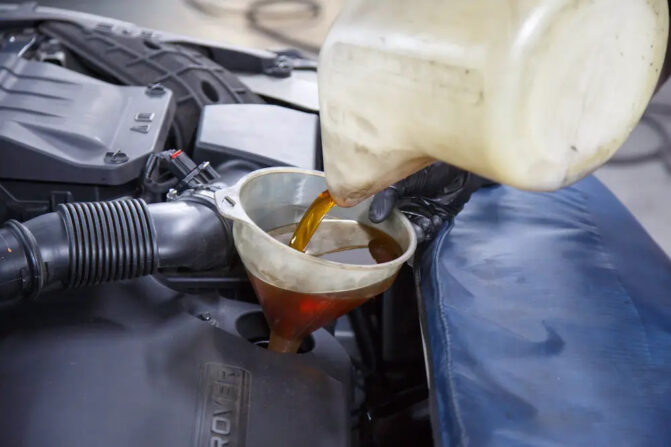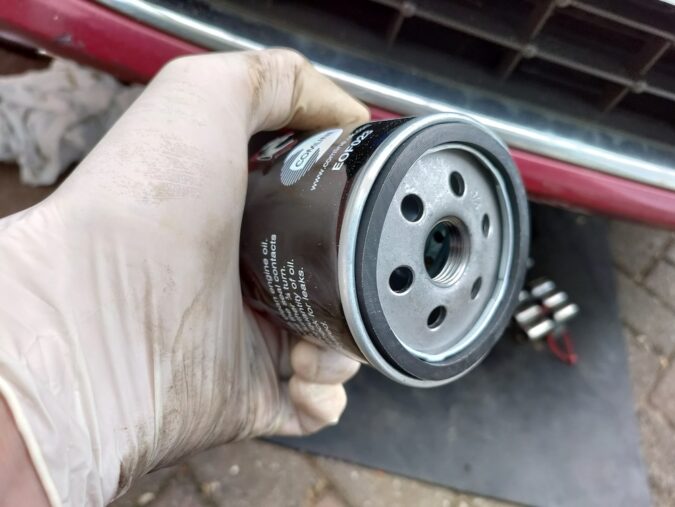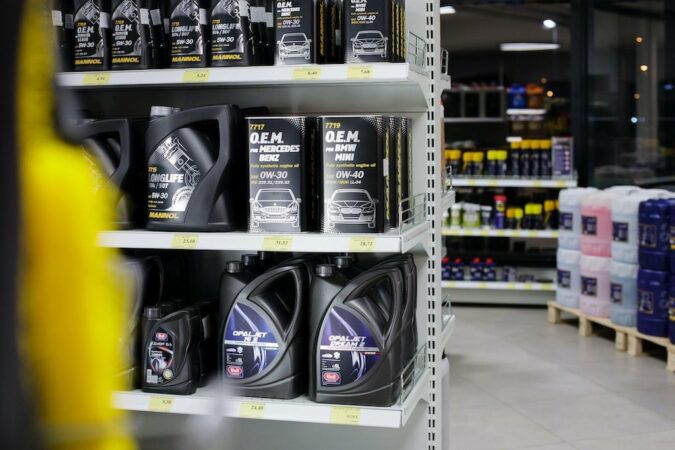What does engine oil do?
One way of explaining the purpose of engine oil (aka motor oil) is to consider what actually happens to a car when it runs out of engine oil. The short answer is that the engine will begin to destroy itself from the inside. The engine’s moving metal components will rub against each other at high speeds, generating an extreme amount of heat and resulting in thermal damage. Not only does this cause premature wear, but it could also cause the power unit to fail completely. Proper lubrication is vital for a healthy car. In addition to protecting parts against premature wear and overheating, the oil also prevents corrosion. Nowadays most engine oils contain advanced additives which inhibit rust, enhance viscosity and prevent or disperse sludge.
How often do you need to change your engine oil?
Over time, the oil will begin to deteriorate and lose its lubrication properties. Carbon deposits and contaminants start to build up, reducing the engine’s performance. Experts used to recommend changing your engine oil every 3,000 miles. Modern formulas tend to last much longer with change intervals typically ranging from 5,000 to 7,500 miles, and some synthetic products can manage up to 15,000 miles. It’s standard practice to change the filter at the same time. Most newer vehicles have an oil life monitoring system which indicates when to replace the fluid and filter.
There are several factors that can affect the longevity of your motor oil, such as the age of the vehicle, the driving environment, the loads it carries, and how the car is driven. For example, the oil will need replacing more frequently if the car is driven in extremely hot, cold or dusty conditions or is regularly used to transport heavy loads. If you’re only using your car for short trips, the oil may never reach its optimal operating temperature, leading to increased condensation and water contamination. It may also make the oil less effective at removing sludge.
How do you add new oil to your engine?
If your oil level is low but the remaining fluid is still clean, you can easily top it up yourself. First, you need to locate the fuel filler cap in the engine bay. You may need to refer to your owner’s manual.
Remove the filler cap and carefully pour in the new fluid using a funnel. If your engine has a dipstick, you can use this to determine how much lubricant needs to be added. It is safer to add a small amount of oil at a time and to keep checking the level on the dipstick each time more oil is added.
If the lubricant is black and sludgy, you’ll need to drain the reservoir first before pouring in the new motor oil. Foamy or creamy looking fluid indicates a more serious issue, such as a coolant leak, which will require the help of a professional mechanic.
What to look for when buying new engine oil
Product Quality
First of all, buying products from trusted brands will help you get more for your money. Top oil brands, such as Febi Bilstein, Valvoline and Castrol, ensure strict compliance with industry standards and the specific requirements of vehicle manufacturers. The difference in the quality of branded products and less known lubricants lies in the base oils and additives used.
Viscosity
It is critical that you only use oils with the correct viscosity rating as specified in the car owner’s manual. The viscosity basically determines the strength and thickness of the lubricant’s protective film. If it is too thick, it could create too much resistance in the engine and prevent the car from starting in cold weather. On the other hand, if it’s too thin it won’t provide enough protection.
Each product has two viscosity ratings: the winter viscosity and the hot viscosity. The winter viscosity indicates how well the oil flows at temperatures below zero, e.g. ‘5W’. The lower the number, the easier it flows in cold temperatures. This is followed by the hot rating which indicates the product’s resistance at temperatures above 100°C. For example, 32946 Febi Bilstein 5W-30 Longlife Plus oil thickens less in cold weather than 10W-30 oil, but is slightly less resistant than 5W-40 grade lubricants in extreme heat.
Suitability
Using an incompatible oil could do more harm than good. If you’re shopping online, you can normally find a list of compatible vehicle models in the product description. 5W-30 is one of the most widely used oil grades due to its versatility. For example, the Febi Bilstein 5W-30 Longlife Plus formula can be used for a wide variety of light-duty petrol and diesel applications from brands such as Alfa Romeo, Audi, BMW, Honda, Fiat, Kia, Volkswagen, Ford, Mitsubishi, and many, many more.






